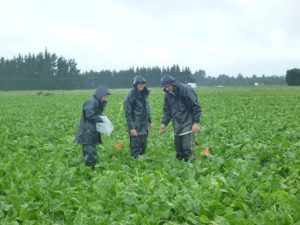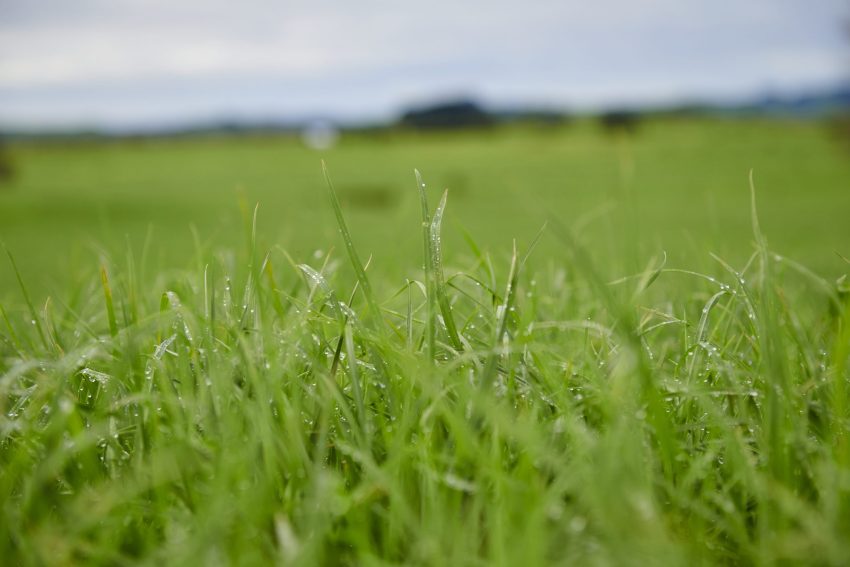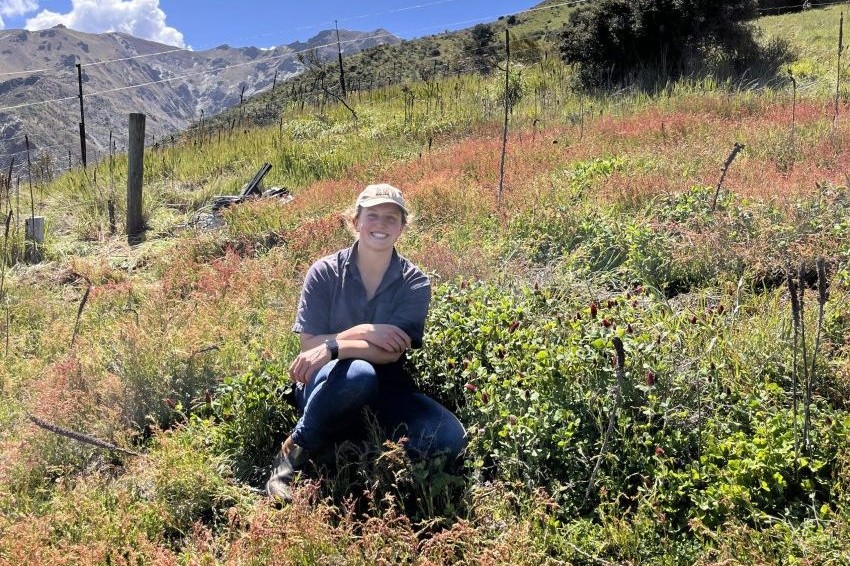Andrew Swallow
Keep fodder beet clean and green to maximise margins, farmers and agronomists heard at a series of field days this winter, but that doesn’t mean using more nitrogen.
Plant and Food Research ran workshops in Waikato, Wanganui, Canterbury and Southland in July, relaying findings from the first two years of a three-year MPI Sustainable Farming Fund project – Fodder Beet Agronomic Solutions.
“That’s the key driver for getting the potential yield you are after,” Plant and Food’s Shane Maley told an audience in South Canterbury, showing contrasting images of trial crops at Orari and Southbridge in Canterbury from 2016-17.
The Orari crop held its canopy to yield 33 tonnes/hectare while the Southbridge one went yellow and lost its leaf between February and May, producing only 25t/ha. Disease, not nitrogen, made the difference.
In the trials, nowhere was there a significant yield benefit to applying more than 100kg/ha of nitrogen, although higher rates did result in higher crop crude protein (ie nitrogen) percentages.
That could be considered desirable, given beet’s low protein content, but FAR’s Ivan Lawrie said manipulating the diet in other ways would be a better approach to meeting livestock’s nutritional needs.
Key points
- Best beet tips
- Avoid marginal sites.
- Use insecticide coated seed.
- Prevent virus with insecticide in post-em herbicide(s).
- Don’t delay herbicides: apply before weeds get true leaves.
- No yield response to potash fertiliser – but consider crop offtake and following crop needs.
- No yield response to nitrogen >100kgN/ha.
“A high carbohydrate to nitrogen ratio is desirable from an environmental point of view,” he said
It was also noted drymatter content declined with an increased nitrogen rate, from 19% drymatter in the no-nitrogen control, to about 15% at 300kg N/ha. Similar effects on drymatter content had been observed in kale for years, Maley said.
Ravensdown agronomist Chris Lowe added applying late nitrogen would “just encourage more top”, which could be to the detriment of overall yield because energy went into producing new leaves instead of storing it as carbohydrate in the bulb.
“If you haven’t protected the leaves from disease coming in they’re just going to die anyway,” he later said.
Having worked with sugar beet in the United Kingdom for years, he’s now applying his knowledge to New Zealand feed crops. Establishing an adequate plant count at the outset is the first key step, which means using insecticide-treated seed.
“I generally recommend 90,000 to 100,000 seeds, depending on seed-bed conditions.”
Seed treatment protection runs out after about four weeks so he recommends including an insecticide in second and/or third herbicide applications to prevent early aphid infestation, and virus infection.
Failure to do that is why many growers are seeing so much yellowing in their crops later in the season, he believes.
“Try to use something that won’t kill the ladybirds. You might have to go off-label.”
Globally, resistance to organophosphate and synthetic pyrethroid insecticides is a growing problem and another good reason for choosing a selective, predator-friendly product, he adds.
Indeed, finding ladybirds in the crop can often be the first sign of an aphid problem and there’s a need for an aphid monitoring programme in key growing areas in spring, not to mention an update on resistance status.
“As an industry we need more information on when, where and what type of aphids are flying.”
By the time the crop is 10-12 weeks old leaves are leathery enough that aphids won’t feed on them, so there’s less need for insecticide.
“New leaves can still be infected as they emerge but often you will find the aphid pressure is less later in the growing season as natural predator numbers have built up and there are other crops nearby that are more attractive, such as brassicas.”
In Canterbury, Lowe says sowing can start mid-September, provided soils are warm and the forecast is good.
“The crucial bit is a soil temperature consistently at five degrees and rising.”
Weed control should start with a robust pre-emergence and prompt follow-up post-emergence sprays before weeds get their true leaves, using a combination of residual and contact herbicides each time.
“You’ve just got to get on with it. There’s no real excuse for weeds in the crop.”
Similarly, nitrogen fertiliser should be applied earlier rather than later to speed canopy development and subsequent yield accumulation.
“Nitrogen is for driving canopy expansion: fungicides are for maintaining canopy.”

Water if you can
Irrigation early in the crop’s development is usually unnecessary, Lowe says.
However, if water’s available, avoiding the leaf wilting that can occur in hot weather from December onwards is advisable as even if the canopy recovers that temporary loss of turgidity can aid disease ingress.
Lowe advocates two applications of fungicide, the first at canopy closure and another three to four weeks later. Waiting to see if any disease develops risks disaster as activity is protective rather than curative.
“You don’t want the leaves dying because the plants then put energy into growing new leaves as opposed to bulb.”
The SFF work included demonstration plots treated with nil, one or two applications of a trifloxystrobin plus cyproconazole formulation, but because the plots weren’t replicated and were surrounded by fungicide-treated crops which would likely have reduced disease inoculum, no conclusions could be drawn, PFR’s John de Ruiter said.
Replicated fungicide trials are planned for the coming season.
At the South Canterbury meeting Maley said more than 70,000ha/year of beet is grown in NZ now but, in the South Island at least, Lowe believes the area has plateaued. Some growers have tried it and, for various reasons, gone back to alternatives.
He said in more marginal sites lower cost options such as forage rape or kale are a better bet.
Potash rate rethink
Potash fertiliser rates for fodder beet could be slashed without reducing yield, judging by results from three sites in the Sustainable Farming Fund trials (see main story).
However, while there was no yield benefit from potash fertiliser, even on sites with low soil reserves, those involved in the trial stopped short of concluding it could be cut completely.
“You probably need to apply some potash for the crop to achieve these drymatter levels,” Plant & Food Research’s Emmanuel Chakwizira told a results meeting near the South Canterbury trial site in July.
He also noted there was no difference in crop uptake of the nutrient at different fertiliser rates, with an average 506kg/ha taken up.
Crop uptake of potash did reflect different soil total bulk potassium (TBK) levels at other sites in the trials, close to a tonne of potash/ha being taken up by trials in Waikato, from a soil with a TBK of 4.3, down to about 250kgK/ha near Gore, Southland where the TBK was 0.9.
But even at the Gore site, there was still no effect of potash fertiliser on yield.
“The crop can access the soil potash pool despite low Quick Test values,” Chakwizira said.
The high uptake figures shouldn’t be a problem if the crop is fed in situ as most would be returned to the paddock in dung and urine, but when lifted and used elsewhere nutrient off-take could cause problems for following crops due to depletion of soil reserves, he suggested.
“We need a better handle on TBK [Total Bulk Potassium] than the Quick Test gives us.”
$400/ha in fert savings?
In a preliminary economic analysis of the SFF work, Plant and Food Research’s project leader John de Ruiter suggested $400/ha could be saved in some situations by reining back nitrogen and potash fertiliser inputs in line with the project’s findings. As a general rule, beet should produce 20t DM/ha or more with input costs of 15c/kg DM or less. Further work on the project’s findings and potential for savings is needed so fertiliser management recommendations can be made with whole farm system factors and outcomes in mind.




